HAYDN SPEAKS



Lead Violin
John Bell
Skye McIntosh
DIRECTOR
Damien Ryan
Rachel McDonald
Saint Clair
Alan John PROGRAM
//
HAYDN SPEAKS
BERRY
14 October, 7pm
Berry School of Arts
BLUE MOUNTAINS
15 October, 5.30pm
Palais Royale, Katoomba
SYDNEY
16 October, 5pm
City Recital Hall
Selected works by Joseph Haydn including: Symphony No. 104 in D Major (London) - I. Adagio - Allegro
String Quartet: Op. 51 (The Seven Last Words of Christ on the Cross) – Sonata No. V in A Major 'Sitio'
String Quartet: Op. 33 No. 3 in C Major (The Bird)IV. Finale. Rondo. Presto
String Quartet: Op. 33 No. 1 in B Minor - II. Scherzo
String Quartet: Op. 20 No. 3 in G Minor - II. Menuetto. Allegretto Symphony No. 93 in D Major arr. Salomon – IV: Finale. Presto ma non troppo Symphony No. 100 in G Major (Military) - IV. Finale. Presto Symphony No. 63 in C Major (La Roxelane) - II. 'La Roxelane'
String Quartet: Op. 20 No. 2 in C Major – II. Capriccio. Adagio - Cantabile Symphony No. 100 in G Major (Military) - I. Adagio. Allegro
String Quartet: Op. 76 No. 3 (Emperor) - II. Poco adagio, cantabile Symphony No. 104 in D Major (London) -IV. Finale. Spiritoso
The performance is approximately 1 hr 50 mins including interval
AUSTRALIAN DIGITAL CONCERT HALL
16 October, 5pm
CANBERRA
20 October, 7pm Albert Hall, Yarralumla
SOUTHERN HIGHLANDS
22 October, 7pm
Burrawang School of Arts
I am thrilled to present this collaborative project that tells the story of our namesake, Joseph Haydn. I’m equally thrilled to collaborate with wonderful artists outside the realm of classical music performance (although of course they are all intimately familiar with opera and theatre) including iconic Australian actor John Bell, director Damien Ryan, writer Rachel McDonald and lighting designer Saint Clair.
The original inspiration came to me when reading a fictional account of Haydn’s life by the author Stendhal. Written as a set of imaginary letters, the writer converses with an unseen and unheard ‘friend’ about his experience of visiting Haydn at the end of his life. The beauty and melancholy of the text captured my interest and the idea to present a work woven from music and an account of Haydn’s life came to me immediately.
Many of Haydn’s own letters have been preserved, but lend themselves less to a narrative than those of Mozart and Beethoven. Working with the scriptwriter, Rachel McDonald, we gradually pieced together a collection of material that included selections from the Stendhal account, Haydn’s own letters, published reviews and the letters of others about Haydn, as well as our own re-imagining. Rachel built a script from all of this material, one where Haydn recounts his own life lessons from a young age through his rise to fame.
In HAYDN SPEAKS this story is in the hands of both Haydn, as personified by John Bell, and embedded in his brilliant music.
For me, exploring Haydn’s life in this way has shed a whole new light on his music and the development of his style.
In our performance we present a selection of his string quartets and symphony movements in chamber arrangements by Salomon including his London and Military Symphonies and the Op. 33 and 76 quartets including The Bird and The Emperor. These mark a number of significant developmental steps in Haydn’s life, including his time spent with the composer Porpora as his assistant, his appointment to the Esterházy position, travel to London, his marriage, love affairs and, ultimately, his death.
We hope you enjoy this fresh new take on Haydn’s life and music.
Skye McIntoshThe Australian Haydn Ensemble, founded in 2012 by Artistic Director and Principal Violinist Skye McIntosh, has quickly established itself as one of Australia’s leading period-instrument ensembles, specialising in the repertoire of the late baroque and early classical eras. It takes its name from the great Joseph Haydn, a leading composer of the late eighteenth century, when style was transitioning from Baroque to Classical.
Based around a small core of strings and flute, the Ensemble performs in a variety of sizes and combinations, ranging from string or flute quartet or quintet, to a full orchestra. It has developed a flourishing regular series at City Recital Hall, the Utzon Room, Sydney Opera House, and in Canberra, where it was Ensemble in Residence at the Australian National University during 2014.
It also performs throughout regional NSW and presents education workshops to students of all ages, focusing on imparting eighteenth-century historical performance techniques. In 2019, AHE presented programs at the Peninsula Summer Music Festival and the Organs of the Ballarat Goldfields Festival in Victoria, receiving glowing reviews. In 2022 the Ensemble performed at the Adelaide Festival.
In 2016 the group released its debut ABC Classics recording The Haydn Album which reached number one on the Australian Aria Classical charts. It received rave reviews, one claiming that the Ensemble stood “proudly shoulder to shoulder with the many period instrument ensembles found in Europe”.
In October 2017 AHE released Beethoven Piano Concertos 1 & 3 on the ABC Classics label, showcasing newly-commissioned chamber versions of the works in the style of the eighteenth century, in collaboration with
Aria award-winning historical keyboardist Dr Neal Peres Da Costa. Reviewers have been extremely enthusiastic: “This recording is remarkable not only for the pianist’s wonderfully free and fluent playing, but also for the excellent performance of the Ensemble.” To commemorate its 10th anniversary, the Ensemble will release its third CD, featuring music by Mozart, in late-2022.
The Ensemble has presented a host of unique chamber music and orchestral programs, working with a range of world-class musicians such as Erin Helyard, Neal Peres Da Costa (Australia), Catherine Mackintosh, Melvyn Tan, Benjamin Bayl (UK), Marc Destrubé (Canada), Midori Seiler (Germany) as well as singers Sara Macliver (Australia), Stephanie True (Canada), Simon Lobelson (Australia), Helen Sherman (UK) and David Greco (Australia). It is particularly interested in presenting unusual programs of eighteenthcentury chamber versions of larger orchestral symphonic and concerto works by Haydn, Mozart and Beethoven, as well as bringing to a wider audience some of the lesser-known contemporaries of these composers, such as Abel, Albrechtsberger, C.P.E. Bach, J.C. Bach, David, Graun, Hoffmeister and Vanhal.
Members of the Australian Haydn Ensemble bring a wealth of expertise from first-class period and modern ensembles and orchestras around the world, such as the Australian Brandenburg Orchestra, Australian Chamber Orchestra, Orchestra of the Antipodes, Concerto Köln, English Baroque Soloists, English Chamber Orchestra, Irish Chamber Orchestra, Julliard 415, Les Talens Lyrique, New Dutch Academy and Orchestra of the Age of Enlightenment.
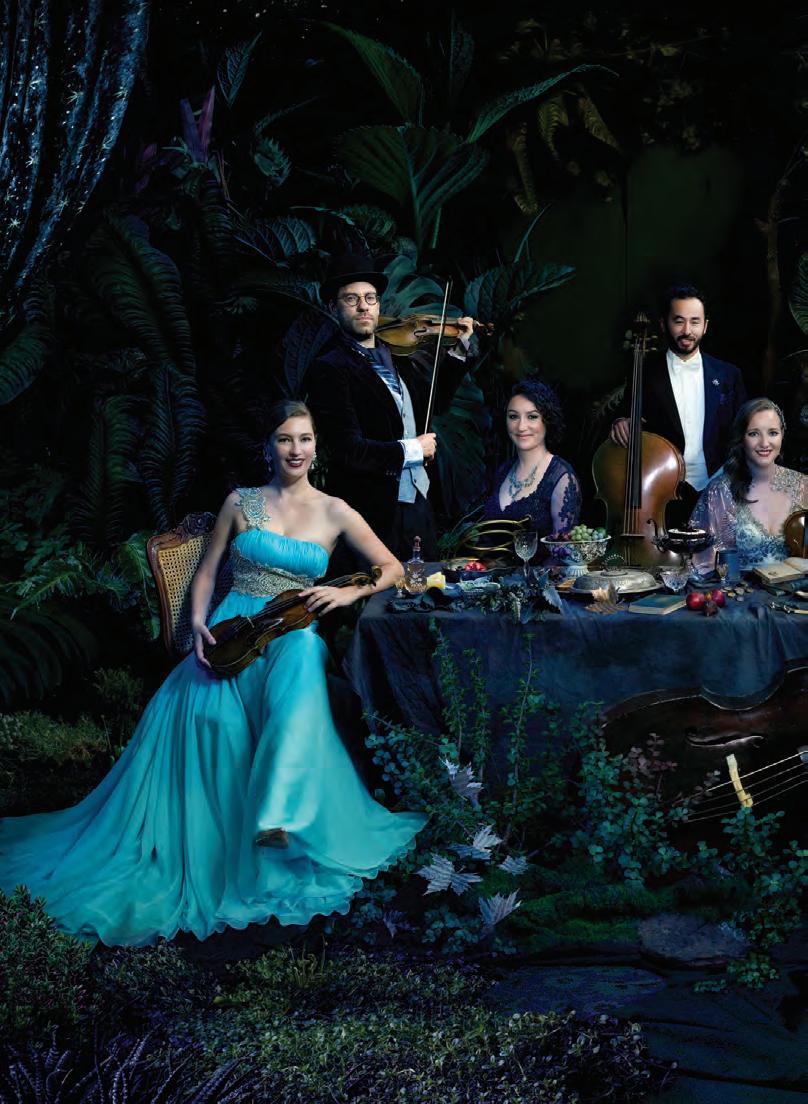
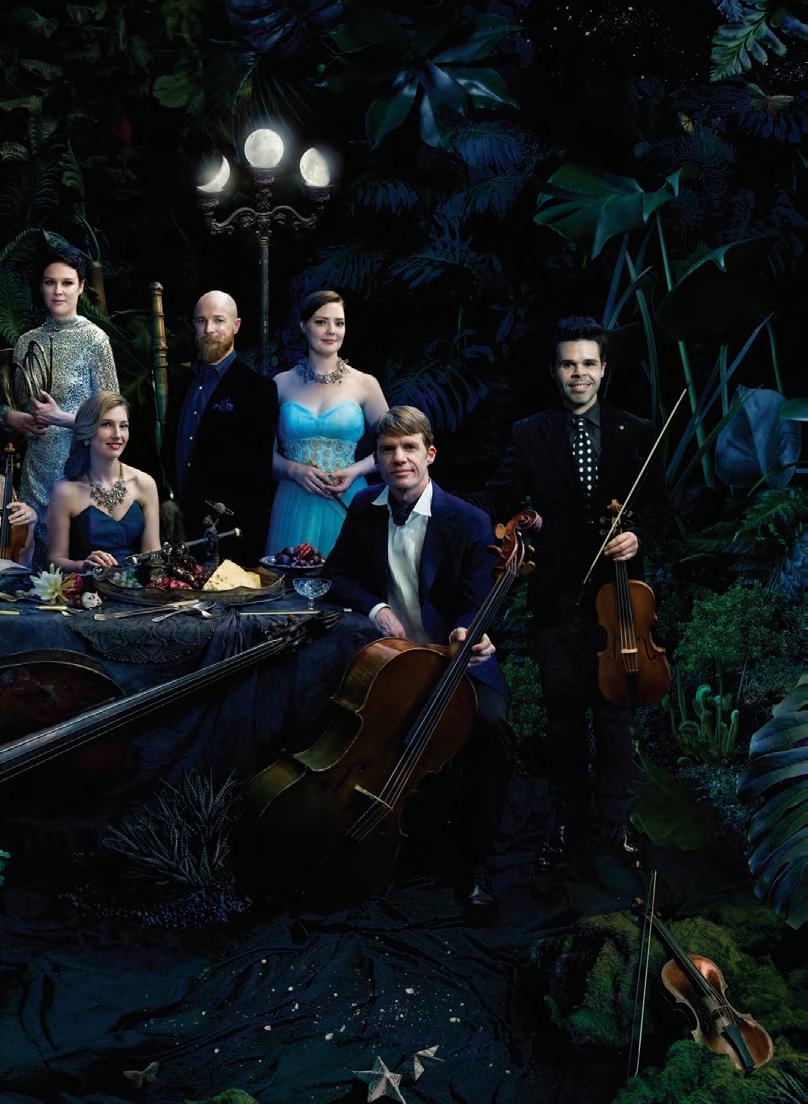
John Bell is one of Australia’s most acclaimed theatre personalities. In a career of acting and directing, John has been instrumental in shaping the Australian theatre industry as we know it. After graduating from Sydney University in 1962 John worked for the Old Tote Theatre Company, all of Australia’s state theatre companies and was an Associate Artist of the Royal Shakespeare Company in the UK.
As co-founder of Sydney’s Nimrod Theatre Company, John presented many productions of landmark Australian plays before founding the Bell Shakespeare Company in 1990. Among many other credits, John directed Tosca and Carmen for Opera Australia, The Rake’s Progress for the Victorian Opera and a production of Madame Butterfly for an Oz Opera national tour. He has recently been performing his one man show on Shakespeare One Man In His Time for Bell Shakespeare as well as his one man show A Few Of My Favourite Things at the Edinburgh Festival.
John Bell is an Officer of the Order of Australia and the Order of the British Empire, and has an Honorary Doctorate of Letters from the Universities of Sydney, New South Wales and Newcastle. In 1997 the National Trust of Australia named him as one of Australia’s Living Treasures; he has been honoured with numerous other national awards for his extraordinary contribution and lifetime achievements as an actor, director and producer.
John is the founder and chair of The Bouddi Foundation for the Arts, based on the NSW Central Coast, dedicated to supporting young artists of all genres.

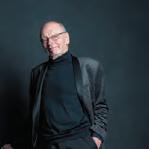
Damien Ryan Damien is Founder and Artistic Director of Sport for Jove Theatre, now in its fourteenth year. The company has staged over 50 productions in that period for hundreds of thousands of Australians and reaches students across NSW annually with its comprehensive Education Program.
As a multi award-winning actor, director and writer he has worked extensively across Australia’s major companies including STC, MTC, Bell Shakespeare, Belvoir, QT, Sydney Festival, CTC, Brisbane Festival, and as a passionate producer in the Independent sector in Sydney over a 28-year period. He has plays published with Currency Press and is a proud member of MEAA.
Recent directing credits include: Venus and Adonis (Feature Film - writer and director); Taming of the Shrew (Queensland Theatre); The Father (STC/MTC), Hamlet, Henry V, Henry IV Parts 1&2, Romeo and Juliet (Bell Shakespeare), As You Like It, Rose Riot, Merchant of Venice, Antigone, Antony and Cleopatra, The River at the End of the Road, Cyrano de Bergerac, No End of Blame, Othello, The Tempest, Romeo and Juliet, Away, The Taming of the Shrew, Macbeth, Loves Labour’s Lost, The Importance of Being Earnest, The Crucible, A Midsummer Night’s Dream, All’s Well That Ends Well, Twelfth Night, The Libertine (Sport for Jove); Look Back in Anger (Old Fitz).
Rachel McDonald
Writer/Director Rachel McDonald has directed for many of Australia’s leading companies, with productions including La Voix Humaine for Opera Australia, The Pianist for Belvoir / Sydney Festival, Queen Lear for Melbourne Theatre Company, La Traviata for OzOpera national tour and The Taming of the Shrew for Sydney Theatre Company education.
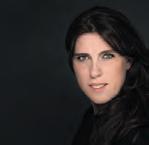
Rachel was Artistic Director at Freeze Frame Opera between 2019 and 2021, where she directed La Boheme, Pagliacci, Rusalka/The Little Mermaid, Tosca, Truckorama, and Angels & Devils, which won best production, direction, and lead at the 2022 WA Performing Arts Awards.
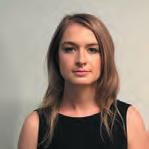
Writing and adapting credits include FFO’s Rusalka adaptation for children, Venetian Carnival and Jane Austen for Musica Viva Australia, and Susanna’s Wedding, a chamber adaptation of Le Nozze di Figaro. She is currently developing a libretto for Walking Man, a piece based on the life of West Australian artist Ross Seaton. Rachel lectures at WAAPA in acting, directing, and design.
Saint Clair
Saint Clair is a Sydney-based lighting designer, producer, and writer, and graduate of NIDA. Her recent credits as LD include, The Marriage Agency, (KXT), How to Defend Yourself (Old Fitz Theatre), Lilac (Kings X Theatre) and John Bell and Simon Tedeschi’s Words & Music regional tour. This year, she has also worked extensively at Griffin Theatre as Lighting Associate, on Ghosting the Party, A is for Apple and Whitefella Yella Tree. Other credits as an associate include Destroy She Said (Belvoir 25a) Ulster American (Seymour Theatre and Riverside Theatres). Later this year she will production manage Mel Ree’s one woman show, Mother May We, at Griffin Theatre.
Skye McIntosh is the founder and Artistic Director of the Australian Haydn Ensemble - now in its tenth year. This audacious undertaking is a testament to Skye’s musicianship and entrepreneurial spirit.
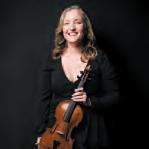
AHE, known for its innovative and ambitious programming, is delighted to be performing at both the Adelaide Festival and Canberra International Music Festival this year, as well as continuing to tour to Canberra and across regional New South Wales.
Skye attended the Royal Academy of Music, London, the Queensland Conservatorium and the Sydney Conservatorium of Music, has made numerous concert appearances as soloist and director and has performed internationally with the Australian Haydn Quartet at The Juilliard School. She has also toured nationally with the Australian Brandenburg Orchestra, as well as performing with Pinchgut Opera and the Australian Romantic & Classical Orchestra.
In 2022 ABC Classics will release AHE’s third CD, featuring Skye performing Mozart’s Violin Concerto in G major.
Skye is playing a violin by Tomaso Eberle, 1770, Naples
Matthew is a concertmaster, soloist and core member of some of the world’s leading period instrument ensembles. He has been a regular member of the Australian Brandenburg Orchestra and concertmaster of the Orchestra of Antipodes (Pinchgut Opera) since 2006. In 2010 he moved to The Netherlands where he studied Baroque violin at The Royale Conservatoire of The Hague and worked with leading European ensembles including De Nederlandse Bachvereniging and Les Talens Lyriques (France). He is a founding member of the Sydney-based ensemble The Muffat Collective.
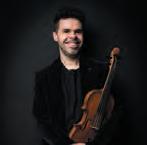
Matthew enjoys teaching baroque violin at the Sydney Conservatorium of Music as well as performing with a variety of international ensembles and festivals in Australia and Europe. Committed to producing a unique and individual sound based on historical performance practices, Matthew believes that seventeenth- and eighteenth-century music is full of vitality and emotions that speak to us now, as much as they did in the past.
Matthew is playing a violin by David Christian Hopf, 1760, Quittenbach.
American violist Karina Schmitz recently settled in Sydney and is thrilled to find herself immersed in the rich and vibrant musical scene in Australia. In addition to performing with the Australian Haydn Ensemble, she is principal violist with Orchestra of the Antipodes (Pinchgut Opera), and has performed with the Australian Chamber Orchestra, the Australian Romantic & Classical Orchestra, Van Diemen’s Band, Salut! Baroque, and Ensemble Galante. In the United States, Karina was principal violist of the Handel & Haydn Society in Boston, principal violist of Apollo’s Fire in Cleveland, principal violist of the Carmel Bach Festival in California, and founding violinist/violist with New York-based seventeenth-century ensemble ACRONYM.
Karina holds viola performance degrees from New England Conservatory of Music (Boston) and the Cleveland Institute of Music. Her early music studies began as an undergraduate at Oberlin Conservatory with Marilyn McDonald, David Breitman, and Miho Hashizume, and she continued her training in the Apollo’s Fire Apprentice Program.
Karina is playing a viola by Francis Beaulieu, 2011, Montreal after Pietro Giovanni Mantegazza, 1793, Milan

“VIRTUOSIC, DELICATE, DRAMATIC AND REVOLUTION ARY IN EQUAL MEASURE.”

Dr Daniel Yeadon is a Lecturer at the Sydney Conservatorium of Music, University of Sydney, where he teaches cello and viola da gamba, coaches chamber music, and engages in research into learning, teaching and historical performance practices. Originally from the UK, Daniel read physics at Oxford University and then completed his postgraduate studies at the Royal College of Music in London.
Daniel has a love of a wide range of musical genres and is an exceptionally versatile cellist and viola da gamba player, performing repertoire from the Renaissance through to Contemporary. Daniel is a passionate chamber musician, playing regularly with the Australian Haydn Ensemble, Ironwood, Australian Chamber Orchestra (ACO), Australian Romantic and Classical Orchestra, and Bach Akademie Australia. For many years Daniel was a member of the renowned Fitzwilliam String Quartet and the exuberant period instrument ensemble Florilegium. He has made many award-winning recordings.
Daniel is playing a cello by William Forster II, 1781, London
Melissa has been Principal Flute with the Australian Brandenburg Orchestra since 2003, and a core member of the Australian Haydn Ensemble since its formation. She performs and records regularly with groups including the Orchestra of the Antipodes (Pinchgut Opera), the Australian Chamber Orchestra, Ironwood, The Australian Romantic & Classical Orchestra, The Marais Project, and Latitude 37, among others. Her numerous solo performances have been with the AHE, NZ Barok, the Australian Brandenburg Orchestra, and Pinchgut Opera. She is featured as concerto soloist in AHE’s digital film Sacro Amor, Gretry’s L’amant Jaloux and in the Australian Brandenburg Orchestra’s Brandenburg Celebrates.
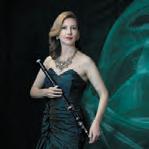
After graduating from the Sydney Conservatorium, Melissa undertook postgraduate study in modern flute, recorder, and traverso in Amsterdam. She teaches period flute at the Sydney Conservatorium and has presented Baroque style workshops and masterclasses to modern flautists in NZ, with Adelaide Baroque (Adelaide), Flute Connections Studio (Sydney), the Australian Flute Festival (Canberra), MLC School (Sydney), Camberwell Grammar (Melbourne), in Penrith with the Australian Brandenburg Orchestra, and at the Sydney Conservatorium.
Melissa is playing a flute by R. Tutz, 2001, Innsbruck, after H. Grenser, c.1810, Dresden
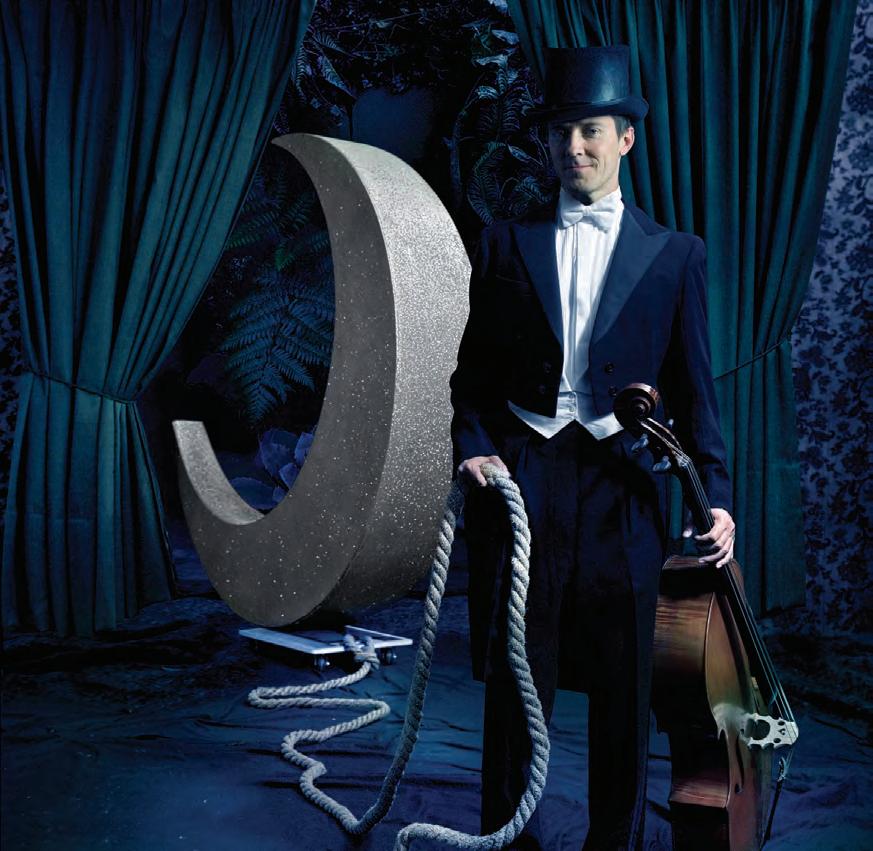
Franz Joseph Haydn was born in 1732 in the Austrian border village of Rohrau, the son of a prosperous wheelwright. He was educated as a choirboy at St Stephen’s Cathedral, Vienna, but found himself thrown back into poverty when his voice broke (his love of practical jokes probably didn’t help). Using his own wits, and his fledgling skills as a composer, he won a job as court kapellmeister (music-master) to a Bohemian count, and then, in 1761, as assistant kapellmeister to the fabulously rich and powerful Hungarian nobleman Prince Paul Esterházy. Haydn served the Esterházy family throughout his life, composing and directing an almost unbelievable quantity of original music for the vast Esterhazy palaces at Eisenstadt and Eszterháza in rural Hungary. He wrote symphonies, string quartets, sonatas and trios; sacred music for the chapel and operas for the Prince’s private theatre.
He worked in isolation – “with no distractions, I was forced to become original”, he said – only gradually realising how popular his music was becoming beyond the palace walls. In 1785, Haydn received a commission from an elite Paris music society to write six symphonies, and in 1790, at the invitation of the impresario Johann Salomon, and at the age of 58, he undertook the greatest adventure of his life – the first of two journeys to London, where he composed twelve symphonies and was hailed as a superstar by a huge and appreciative public. Returning to Vienna in 1795, he composed two oratorios, The Creation and The Seasons, as well as a national anthem for his war-torn homeland.
Napoleon’s siege of Vienna darkened his final days; but by now Haydn was revered across Europe, and when the city fell, the French emperor sent an honour-guard to stand at his door. Though unhappily married, Haydn was regarded by all who knew him as a kindly, generous and deeply religious man; teacher to the young Beethoven, and devoted friend of the much younger Mozart, whose genius he praised without reservation. Mozart called him “Papa”, as did his household servants and his pet parrot, in whose company he died, aged 77, on 31st May 1809.
Haydn is sometimes called the “father of the symphony”, but what he achieved with the string quartet was even more radical. He took a basic ensemble of two violins, one viola and one cello and put them on a near-equal footing. With Haydn, the four instruments seem almost to converse: sharing jokes, adventures, tender emotions and profound thoughts. Between 1757 and 1803 Haydn composed some 83 string quartets. Published (after the custom of the time) in sets (or “Opuses”) of three or six works, they were hugely popular (and often pirated) in his own lifetime.
When, in 1779, the publisher Hummel of Berlin issued the second edition of Haydn’s fifth set of string quartets, he added a little picture of a smiling sun on the front page. It was a stock image; a piece of eighteenthcentury clip-art. But to this day, the six quartets that we now know as Haydn’s Op. 20 are still often referred to as the “Sun”
quartets. It just seemed right – these six quartets, composed in 1772, are shot through with energy and light. Haydn calls the second movement of the second quartet Capriccio –alternating solemn austerity and increasingly passionate expression, he’s already following no rules but his own.
When Haydn next returned to the string quartet, he had a powerful sales-pitch:
I am issuing for the price of 6 ducats, a work consisting of 6 Quartets for 2 violins, viola and violoncello, correctly copied and WRITTEN IN AN ENTIRELY NEW AND SPECIAL WAY (FOR I HAVE NOT COMPOSED ANY FOR TEN YEARS).
Haydn’s six quartets Op. 33 have been called the first truly modern string quartets. That’s for scholars to debate, but what’s beyond dispute is that he’d taken his distinctive quartet style – playful, fast-moving, conversational and deeply expressive — to the next level. His most obvious innovation was a brisk new kind of minuet which he called a Scherzo – literally, a “joke” – though in Haydn’s hands a joke (as here) can sometimes convey a remarkably serious message. But his finales (such as that of the Quartet Op. 33 No. 2) are always perfectly gauged to send listeners (and players) away with their imagination fizzing and a smile on their lips. It’s an art that conceals art, even while it celebrates it.
By 1786 Haydn’s reputation spanned Europe. The Seven Last Words was commissioned by a church in Cadiz, Spain, for their annual Good Friday service and Haydn’s brief was to provide solemn musical meditations to accompany sermons on each of Christ’s final words. The deeply devout Haydn responded with all his usual imagination and sympathy. Sitio (the fifth Word) simply means “I thirst” – so Haydn sets the sighing rhythm of the word to an accompaniment for the dry, parched sound of plucked (pizzicato) strings.
In the eighteenth century, a man in his mid-sixties was well past retirement age, but what struck contemporaries about Haydn’s Op. 76 string quartets was just how daring, how original – in short, how youthful – they sounded. In the words of the British music historian Charles Burney (writing in 1799):
They are full of invention, fire, good taste, and new effects, and seem the production, not of a sublime genius who has written so much and so well already, but of one of highly-cultivated talents, who had expended none of his fire before. The third of the six Op. 76 quartets had a special significance for Haydn. Its slow movement is a magnificent and heartfelt set of variations on the hymn tune that he had composed as a national anthem for Austria. It was a time of war, and Haydn had seen, in London, how communal singing of God Save the King had united people of all classes. Gott erhalte Franz den Kaiser (God Save Franz our Emperor) was first sung in January 1797, and it would be the last music Haydn ever played, days before his death in 1809. Today, with different words, it serves as the national anthem of Germany.
In Haydn’s youth, a Sinfonia (or symphony) could be many things, including an instrumental overture to an opera — it was during his lifetime that it came to mean a large-scale orchestral work in several movements. Between 1759 and 1795 Haydn composed over 100 symphonies, mostly for Prince Esterházy’s small but brilliant private orchestra. But the six symphonies that he wrote for Parisian connoisseurs in 1785-6, and the twelve that he composed for London audiences between 1791 and 1795 were grand and imaginative public statements: permanently redefining the symphony as the most expansive and powerful form of purely instrumental music. Beethoven and Mozart listened, and learned…
Roxelane was the beautiful and intelligent wife of Sultan Suleiman the Magnificent (1494-1566), and the subject of a play which was staged at Eszterháza around 1780. Naturally Haydn was asked to write the music, which he later recycled into this symphony. Everyone living in Hungary in 1780 knew about the Ottoman Empire: after all, it was less than a century since Turkish armies had conquered much of central Europe and besieged Vienna itself. As time passed, their legacy came to be seen as colourful, and even benigncroissants, Viennese coffee and the thermal spas of Budapest are all pleasures for which we can thank the Ottoman invaders – and the florid, mock-oriental swagger of this Minuet will have brought a hint of Eastern spice to musical evenings at Eszterháza.
When the 58-year-old Joseph Haydn arrived in London on 1st January 1791, after a two-week journey from Vienna, he sparked a Georgian media-frenzy. “I went the round of all the newspapers for three successive days” he wrote to a friend, back in Vienna. “Everyone wants to know me!” He’d been invited to London by the impresario Johann Salomon, who provided him with comfortable lodgings, and a superb, 60-strong orchestra – and within weeks, he had the British public in the palm of his hand. Their enthusiasm electrified him; he saw what his audience enjoyed and responded with music packed with fantasy, drama and thrilling, life-affirming energy.
The Symphony No. 93 was premiered at the Hanover Square Rooms on 17th February 1792, and it was an instant hit: “His genius, active as it has been, is as vigorous and fertile as ever” declared
the critic of the Morning Herald. Haydn returned to London in 1794, and his 100th Symphony, premiered in March 1794, caused a sensation: Haydn had incorporated “military” percussion instruments into the second movement and finale, and the effect was explosive (and deafening). “Encore! Encore! Encore! resounded from every seat” reported the Morning Chronicle. His final symphony for London, No. 104, would be the last he wrote: it was premiered in May 1795. There’s a solemnity and wistfulness about its first and last movements, as well as an irrepressible exuberance and sweep.
Some say that Haydn quotes London street-chants in his last symphony; others believe them to be Hungarian or Croatian folksongs. But it hardly matters; by now, his range – and his popularity – was universal. A final word: you’ll have noticed that we do not have a 60-strong orchestra today. Instead, we’re using versions for chamber ensemble, prepared by Haydn’s friend and promoter Salomon. In an age before recordings (or copyright) this was common practice: it meant that music-lovers far from major cities (or without the wealth of an Esterházy) could hear and enjoy Haydn’s music at home, or anywhere that they could gather a handful of like-minded amateur players. We’re hearing Haydn’s symphonies the way that most of his contemporaries would have discovered them – scaled down, but with all their freshness, humour and imagination very much present, and large as life.
Richard Bratby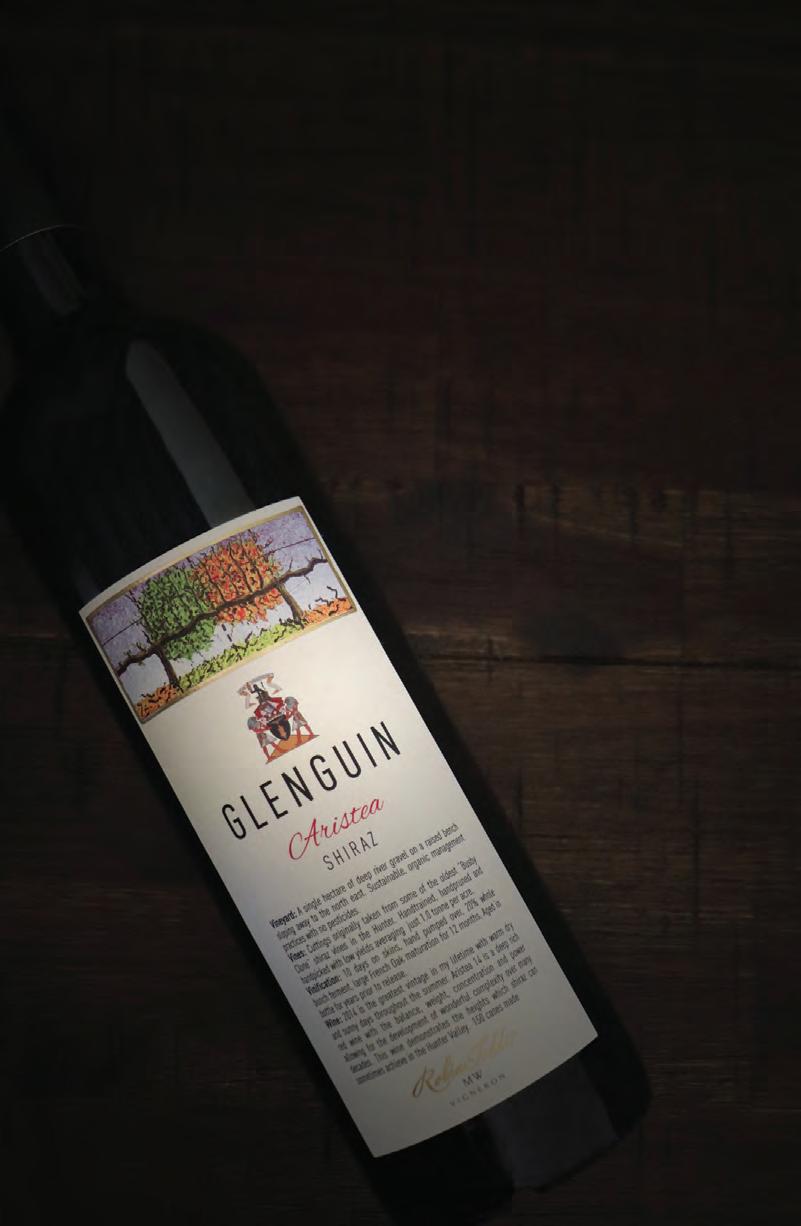
Our patrons enable us to continue presenting wonderful concerts. We are so grateful to everyone who supports us and cannot thank you enough. Patron categories are named after famous eighteenth-century patrons who supported and commissioned many of Haydn, Mozart and Beethoven’s works that we know and love today. Where would we be without them?
Esterházy Prince Esterházy was the main patron of Haydn. Waldstein Count Waldstein was an early patron of Beethoven.
Van Swieten He was a keen amateur musician and patron of Haydn, Mozart, and Beethoven.
Galitzin He was an amateur musician and is known particularly for commissioning three Beethoven string quartets Op. 127, 130 and 132. Lobkowitz He was a Bohemian aristocrat and a patron of Beethoven. Razumowsky He commissioned Beethoven’s Op. 59 String Quartets.
PATRON
Professor the Honourable Dame Marie Bashir AD CVO
Dr Timothy Pascoe AM
THE CHAIR’S CIRCLE
Marco Belgiorno-Zegna AM & Angela Belgiorno-Zegna
Mark Burrows AO * Tom & Sherry Gregory Kevin McCann AO & Deidre McCann *
Ian & Pam McGaw
Timothy & Eva Pascoe * Peter Young AM & Susan Young
ESTERHÁZY $15,000+ Anonymous * (1)
WALDSTEIN $10,000 - $14,999 Reg & Kathie Grinberg * Peter & Lisa Macqueen
VAN SWIETEN $5,000 - $9,999
Jan Bowen AM FRSN * Jeremy Eccles FRSN & Kate Eccles OAM * Harriet Lenigas Adrian Maroya Peter & Libby Plaskitt Robert & Myriame Rich Agnes Sinclair * Nigel & Penelope Stewart
GALITZIN $1,000 - $4,999 Antoinette Albert Margot Anthony AM * Martin & Ursula Armstrong Jock Baird * Mary Beare * Clive Birch Celia Bischoff * Keith & Louise Brodie *
Robert & Carmel Clark * Dr Terry & Julie Clarke
John Claudianos & Dr Nena Beretin
Jean Cockayne
Judy Crawford
Mark & Stephanie Darling
Michael & Manuela Darling
Peter & Prudence Davenport * Robert & Jane Diamond Ron & Suellen Enestrom *
Ralph Evans AO & Maria Evans * John Fairfax AO & Libby Fairfax * Beatrice Farnsworth * Dr Marguerite Foxon * Bunny Gardiner-Hill * Christine Goode * Prof Pru Goward
Jamie Hardigg Don Harwin Andreas & Inn Ee Heintze Karin Keighley David Maloney AM & Erin Flaherty * Paul & Anne Masi Nick & Carolyn Minogue * Nola Nettheim Trevor Parkin * Nick Payne
Susan Perrin-Kirby David & Elizabeth Platt Keith & Robyn Power Penelope Seidler AM Xavier Shea
Roger & Ann Smith * David & Isabel Smithers Anthony Strachan Dr Jenepher Thomas * Kay Vernon *
The Hon. Anthony Whealy K.C. & Annie Whealy Anonymous (6) incl 2 *
LOBKOWITZ $500 - $999
Gary & Ruth Barnes
Lloyd Capps & Mary Jo Capps AM * Sylvia Cardale
George H Clark
Wendy Cobcroft * Richard & Cynthia Coleman Sean Conkey & Tegan Redinbaugh *
Dr Peter Craswell
Dr John Dearn * Ann Douglas Alison Dunn * Dr Meredith Edwards John & Liza Feeney * Jean Gifford * Paul Hopmeier & Janice King * Dr Gerard Joseph Anne Lander
Diccon & Liz Loxton Chris Matthies* Andrew & Abbey McKinnon Dr Jacqueline Milne * Ken & Liz Nielsen * Beverley Northey Pieter & Liz Oomens Mark & Lise Rider * Susan Roberts Greg & Wendy See * Dr Richard Sippe David Thompson & Margaret Kyburz
Dr Frances Whalan Dr Margot Woods Anonymous (2) incl 1 *
RAZUMOWSKY $50 - $499
Derek Abbott
David & Jill Adams Gaby Aitkin * Alliance Legal Services * Catherine Andrews Helen Anglias Ann Armstrong Wayne Arthur
Anthony Bailey * Anna-Rosa Baker
Dr Susan Ballinger
Margaret Bassal Ken & Annabel Baxter Andrew Blanckensee
Peter Bodor KC & Sally Bodor Dion Boehme
Dr Hannes & Barbara Boshoff Ian & Bea Bowie
Jeffrey Bridger
Rob Bridger
Graeme & Bronwyn Brown Fiona Burns Gerry Burns Claire Burrell-McDonald
Dr Andrew Byrne
Dr Nola Cooke Christine Cooper James & Stuart Coughlan * Catherine Cowper Susan Cox Isabel Crawford Ruth Crosby
Peter Cumines
David Cummins
Judith Dare Catherine Davies
Jennifer Dewar
Dr Robert Dingley * Nick Dinopolous * George Drew Malcolm Druery * Christine Ducker AM * Sandra Duggan Ian & Susan Ernst * Paul & Ros Espie
Richard Fawdry & Carla Bosch Gary Feeney * Barry Firth * Denise Fisher
Marion Flynn Michael Fong * Ivan Foo & Ron Gouder Andrew Ford *
Denys & Jennifer Garden * Stephen Gates
David Geer * Dr Robin Gibson Allan Gill Gavin Gostelow
Virginia Gray Rosemary Greaves Toby & Helen Greenacre * John Greenwell
Erik Haan * Lesley Harland
Dr Stuart & the late Pamela Harris Vicki Hartstein Susan Hawick Meredith Hellicar * Jenni Hibbard * Paul Hickman Anne Hinkley Julia Hoffman Stephen Holmes * Elizabeth Howard John & Patricia Howard Ralph Hunt Wayne Hutchins * Catherine Ikin * Lilla Ito
Judy Jacovides
Paul & Carol James * Ron James
Peter & Margaret Janssens Eddie & Annie Jones * Gabrielle Kancachian * Thora Karras * Poss Keech * Heather Kenway Jenny Kerr Siew-Ean Khoo Susan Kingsmill Pastor de Lasala OAM *
Penny Le Couteur * Cecilia Lillywhite
Peter Lowry OAM & Dr Carolyn Lowry OAM * Elbert Mathews
Terry & Catherine McCullagh * Tim McDonald * Joanne McGrath Wendy Mcleod * Brenda McNaughton Dr Patricia McVeagh Christine Melican Sue Mercer
Paul & Betty Meyer * Raoul & Helen Middlemann Louise Muir Carl Murphy * Phillip Murray
Jan Marie Muscio * Heather Nash Prue Niedorf Dennis Nicholls Andrew O’Connor * Henry O’Connor Robin Offler * Louise Owen * Anne Pickles
Lesley Potter
Jasmine Price * Susanna Price Geoff Randal Jan Redinbaugh * Heather Reid
Deidre Rickards * Pamela Roberts * John & Pam Rooney * Mary Rose-Miller * Jennifer Roseinnes Felicite Ross * Lesley Rowe
Matthew Sait
David Salter & Susan Young Anneke Scott * Robin Sevenoaks * Carole Anne Shearer * Pam Shein * Ian Sheldrick Alan Singh * Barbara Spencer * Michael & Rosemary Sprange * Keith & Janet Stanistreet Kaye Stevens Jenny Stewart
Dr Brian & Patricia Stone
Dr Rupert Summerson * Pamela Swaffield Susan Tanner * Kerry Thomas * David & Jill Townsend * David & Helen Turvey John Underwood* Gabriella Unsen Ailsa Veiszadeh * Herta Verge Penny Watsford * Lesley Whalan & Wendy Carlisle Nic & Elaine Witton * Wendy Yeomans
In Memory of John Greenwell Anonymous (20) incl 12 *
* Indicates contributors to the 2021 Pozible Campaign to fund AHE’s 10th Anniversary CD
This listing is current as of 19 September 2022, and we gratefully recognise all donations received since 1 July 2021.
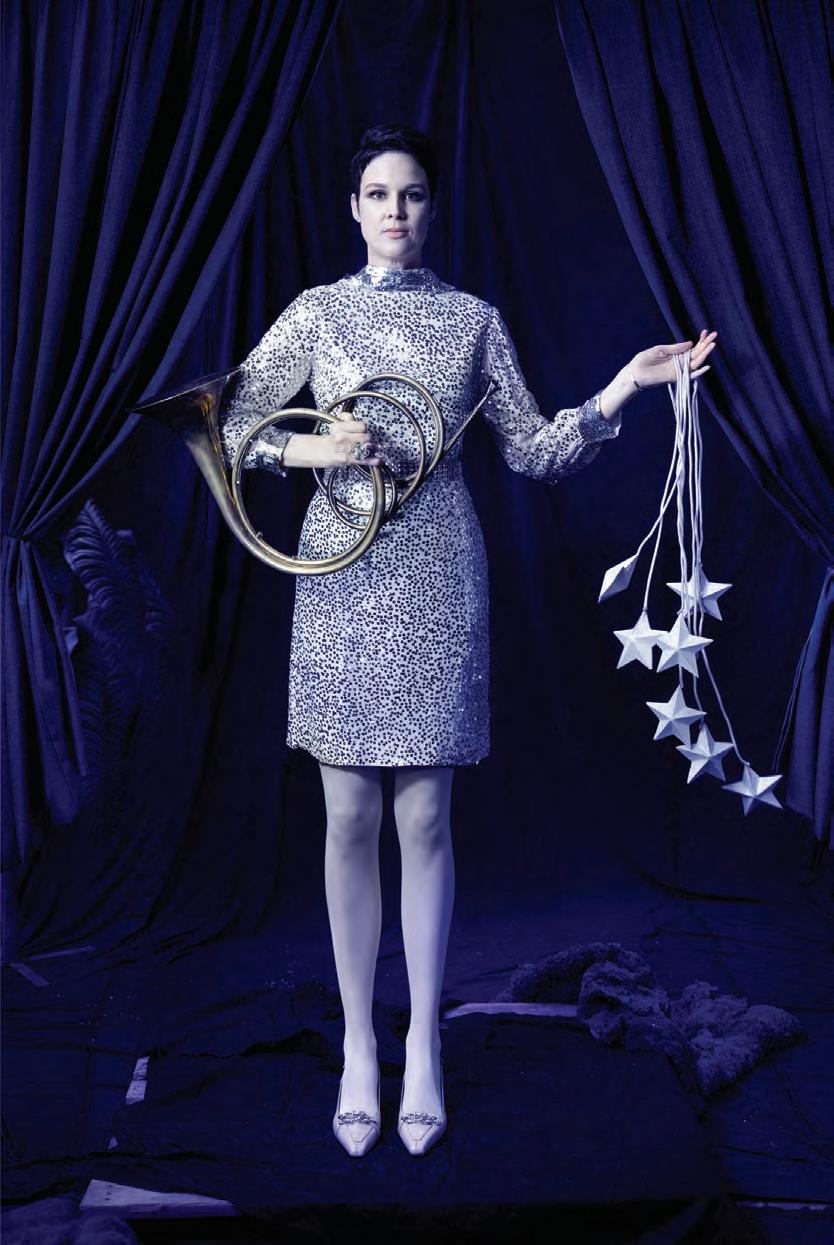
AHE
Wine Partner
Livestream Partner
Media Partner
Audit Partners
Strategic Development Partner
Australian Haydn Ensemble is a COVID safe organsiation.




Marco Belgiorno-Zegna AM (Chair)
Jan Bowen AM FRSN
Harriet Lenigas
Adrian Maroya
Kevin McCann AO
Skye McIntosh (Artistic Director)
Jon North
Peter Young AM
The Australian Haydn Ensemble acknowledges the traditional custodians of the lands on which we perform. We pay our respects to Elders past, present, and emerging.
Details in this program are correct at time of publication. Australian Haydn Ensemble reserves the right to add, withdraw or substitute artists and to vary the program and other details without notice. Full terms and conditions of sale available at our website australianhaydn.com.au or on request.
Skye McIntosh – Artistic Director
Tegan Redinbaugh – Chief Executive Officer
Alison Dunn – Marketing and Communications Emma Murphy – Financial Controller
Janine Hewitt – Accountant Stephen Bydder – Administrator Marguerite Foxon – Front of House and Administrator* Arnold Klugkist – Orchestra Manager Vi King Lim – Score Services
Jean Gifford, Canberra Greg and Wendy See, Berry
Thank you to our patrons who kindly provide accommodation for our out-oftown performers
IMAGES Images throughout by Helen White except page 6 (John Bell) James Mills, page 6 - 7 supplied, and page 8 - 10 James Mills.
Australian Haydn Ensemble is a not for profit organisation. ABN 26 202 621 166
Level 1/16-18 Oxford Square Darlinghurst NSW 2010 1800 334 388 (Freecall) | australianhaydn.com.au